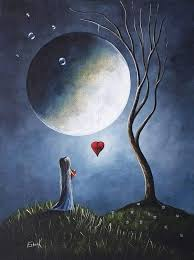Have you ever locked eyes with someone new and felt a quiet certainty that your hearts would eventually intertwine—even before the butterflies arrived? That mysterious pull isn’t just a scene from a movie; it’s a feeling so profound that the Japanese crafted an entire phrase just for it.
While Western culture romanticizes love at first sight, Japan offers something deeper, quieter, and utterly irresistible: koi no yokan. Let’s unravel why this concept has whispered its way into global hearts and playlists—from Deftones albums to late-night TikTok reflections.
Breaking Down the Phrase: Koi No Yokan Kanji and Translation

Koi no yokan consists of three distinct Japanese characters: 恋 (koi), の (no), and 予感 (yokan). Each piece paints a vivid picture of this emotional premonition. Let’s unpack them like puzzle pieces:
- 恋 (koi) – This kanji represents passionate, romantic longing. Think of it as love with heartbeat-in-your-throat intensity.
- の (no) – A tiny grammatical bridge meaning “of,” connecting emotions like an invisible thread.
- 予感 (yokan) – Literally “premonition” or “foreboding.” It’s that spine-tingling sense something is coming—like smelling rain before clouds gather.
Put together, koi no yokan (恋の予感) translates to “the premonition of love“—not love itself, but the quiet conviction it’s inevitable. Pronounce it like “koh-ee noh yoh-kahn” (rhymes with “yoga”). Fun fact: Japanese speakers often soften the “g” in yokan to a gentle “n” sound—it’s like a secret handshake for language learners!
The Feeling Behind the Phrase
Koi no yokan captures that magnetic pull when you just know a crush will bloom into love, even on a first coffee date. It’s wildly different from “love at first sight” (hitomebore in Japanese), which is all fireworks and instant attraction. Here’s the delicate dance between them:
| Love at First Sight (Hitomebore) | Koi No Yokan |
|---|---|
| 💥 Instant sparks | 🕯️ Slow-burning candle |
| “I’m head-over-heels NOW!” | “I feel we’ll be soulmates” |
| Like a pop song chorus | Like a folk song’s whispered verse |
This concept roots itself in Japan’s cultural love for subtlety. Remember aimai (曖昧)? It’s the art of leaving things beautifully ambiguous—like how cherry blossoms hint at spring without shouting. Similarly, koi no yokan thrives in glances across a room or shared silence on a train. It’s also cousins with yūgen (the haunting beauty in life’s mysteries) and even hyggelig (that Danish “cozy contentment” vibe). One Reddit user put it perfectly:
“It’s not about falling in love—it’s about feeling the ground already there beneath your feet.”
Koi No Yokan in Japanese Culture and Conversation
Japanese people often express koi no yokan through actions, not words—like offering incense during heartfelt moments. Magnolia incense, for example, quietly says “I see your soul” without a single syllable. Here’s how it lives in real talk:
- “Ano hito to deatta toki, koi no yokan ga shimashita.” → “When I met that person, I knew love was coming.”
- “Kono kanji, koi no yokan mitai da ne.” → “This feeling? Totally koi no yokan energy.”
You’ll spot it in anime pauses where characters exchange lingering looks, or in lyrics like Utada Hikaru’s songs. But globally? The Deftones’ 2012 album Koi No Yokan made it a Gen Z mantra—fans tattoo the phrase after concerts! Pro tip: Use it when you sense a slow-building romance (not a crush). Whisper it over matcha lattes, not in text bubbles.
People Also Ask: Common Questions About Koi No Yokan
Koi no yokan sparks endless curiosity about its meaning, pronunciation, and cultural heartbeat. Let’s tackle your top questions:
What does koi no yokan mean in English?
Koi no yokan translates directly to “the premonition of love” or “foreboding of affection.” But English lacks a single-word match—it’s why we borrow it! It’s closer to “I sense our love story before it begins” than “I love you now.”
How do you pronounce koi no yokan?
Pronounce it koh-ee noh yoh-kahn—with a soft “n” sound at the end, like a sigh. Break it down:
Koi = “koh-ee” (like “coy” but longer)
No = “noh” (rhymes with “dough”)
Yokan = “yoh-kahn” (the “g” vanishes!)
Try humming it: “koh-ee noh yoh-kahn” → sounds like a love letter set to music.
What’s the difference between koi no yokan and love at first sight?
Love at first sight hits you like a wave; koi no yokan feels like the tide’s gentle pull. With hitomebore, hearts race instantly. With koi no yokan, you walk away thinking, “Wow, we’re definitely going to be important to each other.” One’s a grand gesture; the other’s a quiet promise.
Can you use koi no yokan for friendships or platonic bonds?
While primarily romantic, Japanese speakers sometimes adapt it for destined friendships. Imagine bonding with someone and feeling, “We’ll be best friends forever”—that’s koi no yokan’s cousin! But traditionally? It’s reserved for soulmate-level magic.
Conclusion: Embracing the Premonition of Love
This beautiful phrase teaches us that love’s most powerful moments often arrive as gentle whispers, not shouts. Next time you feel that unshakable “this person matters” sensation, breathe into it. Let it unfold like cherry blossoms—no rush, no pressure. After all, koi no yokan isn’t about predicting the future; it’s about trusting your heart’s quiet knowing. As I scribbled in my journal after my first trip to Kyoto: “Some loves aren’t found. They’re felt before they’re lived.” Go notice those premonitions—they’re your heart speaking its oldest language.

